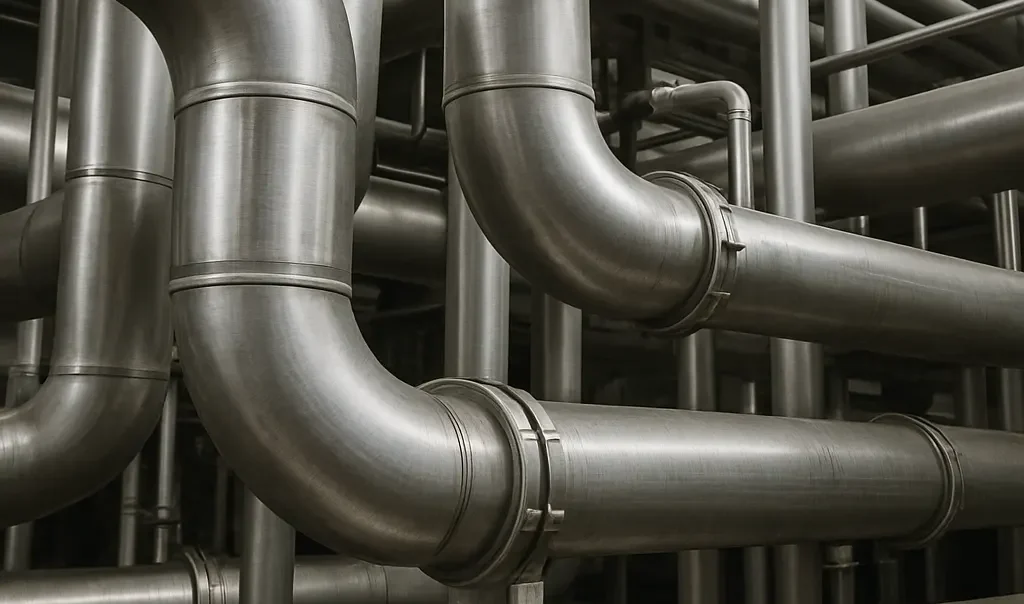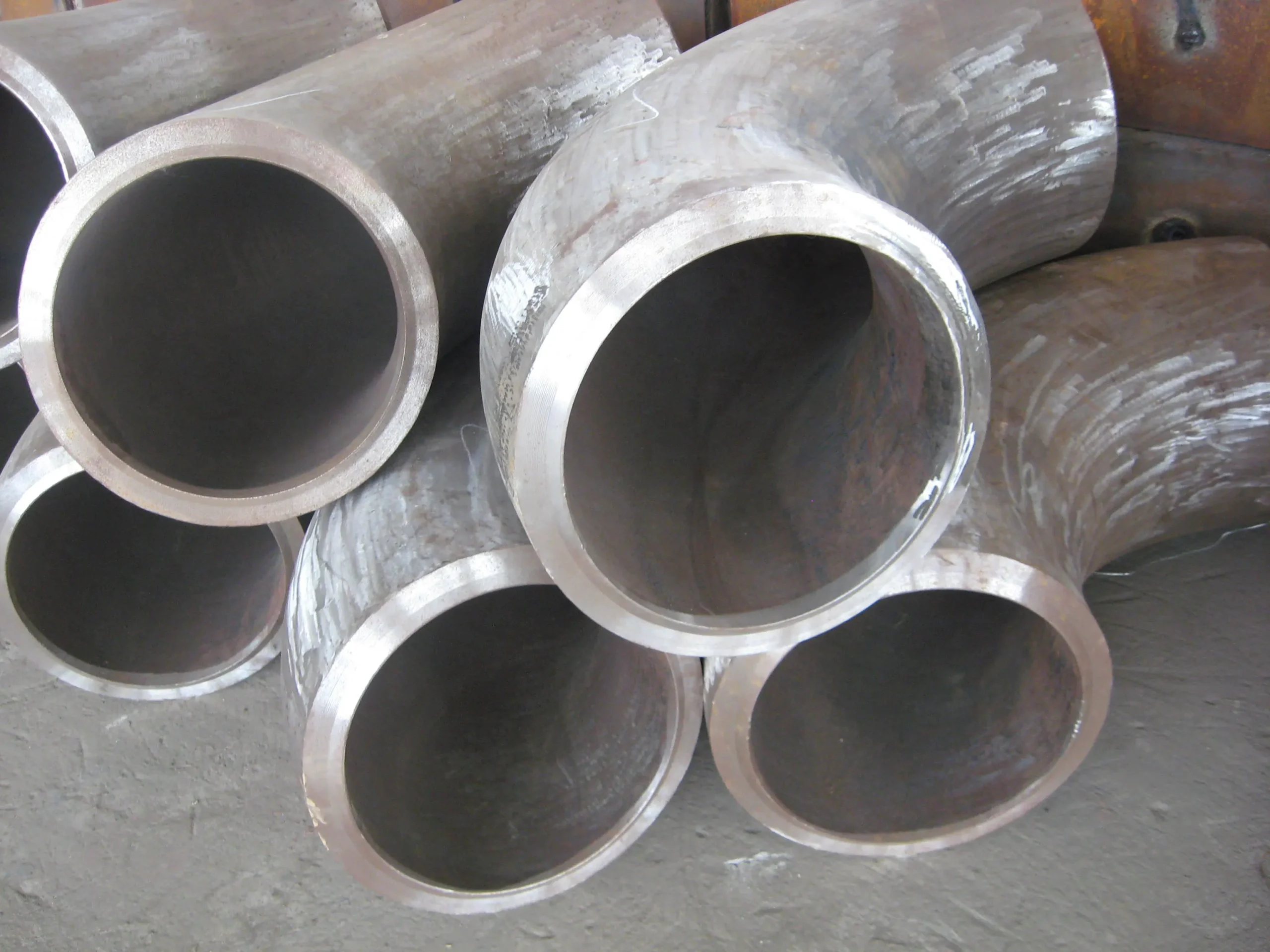When it comes to materials we use in construction, manufacturing, and various other industries, steel and stainless steel are often at the forefront. Although they may sound similar, these two materials have distinct characteristics that make them suitable for different applications.
Что мы делаем
- Пластина
- Лист
- Поковки
- Круглый прут
- Фланец
- Трубы
- Арматура
- На заказ
Свяжитесь с нами для получения дополнительной информации
What is Steel
Steel is an alloy made primarily of iron and carbon. The содержание углерода in steel can vary, but it usually falls between 0.2% and 2.1%. This variation in carbon content is what gives steel its strength and flexibility. Other elements, like manganese, хром, nickel, and tungsten, can also be added to enhance certain properties.
Types of Steel
This is the most common type of steel, consisting mainly of iron and carbon. It is known for its strength and is often used in buildings, bridges, and automotive components.
Alloy steel includes additional elements such as chromium, nickel, or vanadium. These elements improve the steel’s hardness, strength, and resistance to wear.
As the name suggests, tool steel is used for making tools. It contains elements like tungsten and молибден, which give it high heat resistance and durability.
Although technically a type of alloy steel, SS deserves its own category due to its unique properties.

What is Stainless Steel
Stainless steel is a type of steel that contains at least 10.5% chromium. This addition of chromium is what sets SS apart from regular steel. The chromium forms a thin layer of oxide on the surface, which prevents corrosion and gives SS its “stainless” quality.
Types of Stainless Steel
Austenitic Stainless Steel is the most common type of SS, known for its excellent corrosion resistance and ease of fabrication. It contains high levels of chromium and nickel.
Ferritic SS is known for its magnetic properties and good corrosion resistance. It contains high chromium levels but low nickel, making it less expensive than austenitic.
This type is known for its high strength and hardness. It contains moderate amounts of chromium and is often used in cutlery and surgical instruments.
Дуплекс из нержавеющей стали combines the properties of austenitic and ferritic SS, offering high strength and good corrosion resistance.
Key Differences Between Steel and Stainless Steel
Устойчивость к коррозии
The most significant difference between steel and stainless is коррозионная стойкость. SS is highly resistant to rust and staining due to the presence of chromium. Regular steel, on the other hand, is prone to rust when exposed to moisture.
Прочность и долговечность
Steel is known for its strength and durability, making it ideal for structural applications. However, stainless’s resistance to corrosion and heat gives it an edge in environments where these factors are a concern.
Стоимость
Steel is generally less expensive than SS. The additional elements in stainless steel, particularly chromium, increase its cost. However, the long-term benefits of lower maintenance and replacement costs can offset the initial expenditure.
Появление
SS boasts a bright, shiny обработка поверхности that is often popular for its aesthetic appeal. While steel is robust, its visual appeal pales in comparison to stainless steel when left raw or without coating.
Applications of Steel and Stainless Steel
Common Uses of Steel
- Construction: Steel is widely available for use in beams, columns, and reinforced structures in construction.
- Automotive: The automotive industry relies on steel for frames, body panels, and engine components.
- Machinery: Steel’s durability makes it ideal for machinery and equipment parts.
Common Uses of Stainless Steel
- Piping, Tubing, и Арматура: Crucially, stainless steel’s non-corrosive and hygienic properties make it the primary material for fluid transport in demanding sectors like Chemical Processing, Oil & Gas, Food & Beverage, and Pharmaceutical industries.
- Kitchenware: Stainless steel is a popular choice for kitchen utensils, cookware, and appliances due to its corrosion resistance and easy-to-clean surface.
- Medical Instruments: The non-corrosive nature of SS makes it ideal for surgical instruments and medical devices.
- Architecture: Stainless steel’s aesthetic appeal and resistance to weathering make it a popular choice for architectural features and facades.
Focusing on the Value of Stainless Steel in Fluid Systems
While regular steel offers strength for foundational structures, stainless steel—especially in its various grades like Аустенитный а также Дуплекс—provides the critical combination of strength, durability, и unrivaled corrosion resistance needed for modern fluid management. This makes stainless steel the indispensable choice for manufacturing reliable, long-lasting pipes, tubes, valves, and fittings.
Связаться с нами
- RM901 No.22 Tangjiaqiao Road Wenzhou Китай
- +86 577 8551 1171
- [email protected]
- https://www.kaysuns.com/



